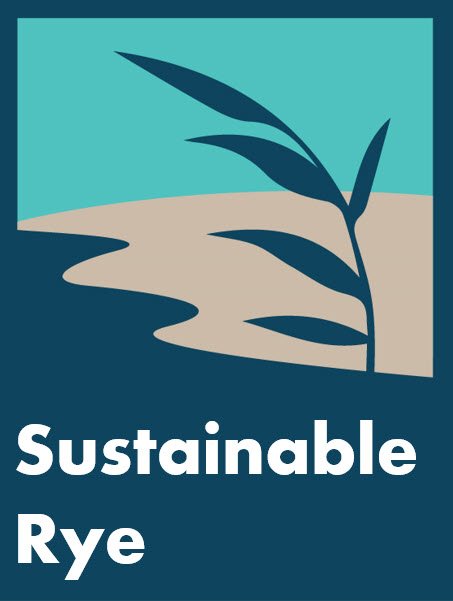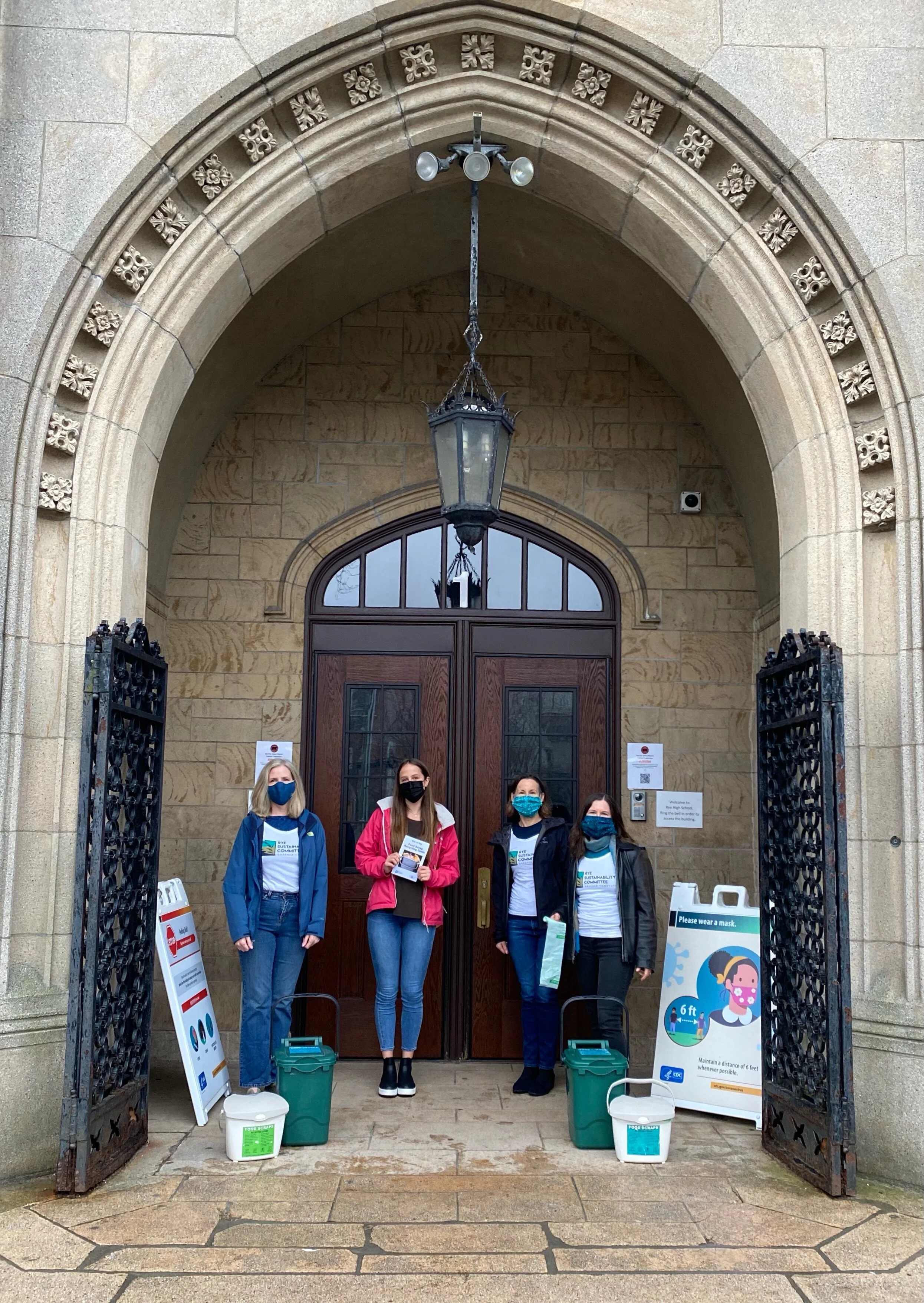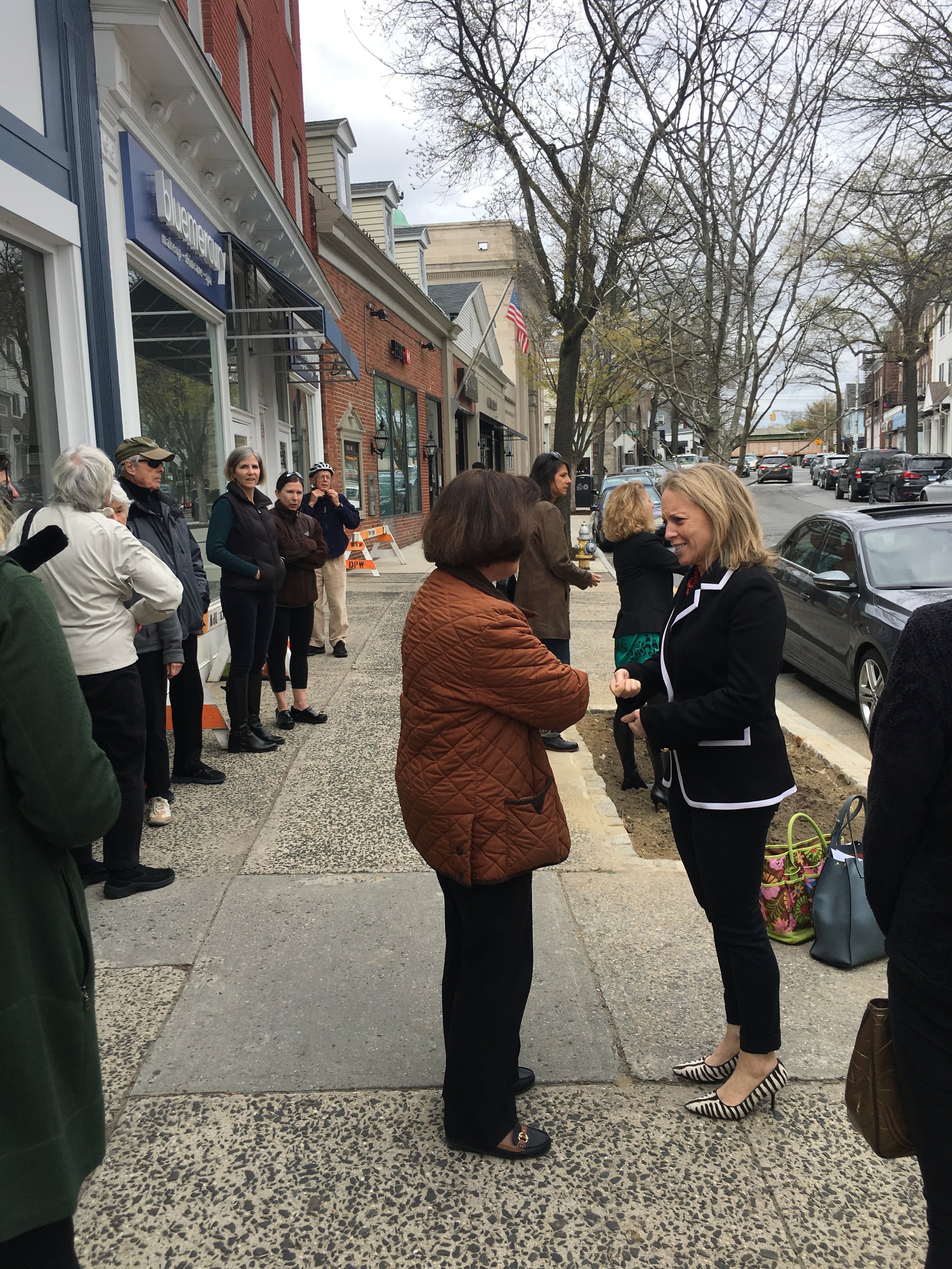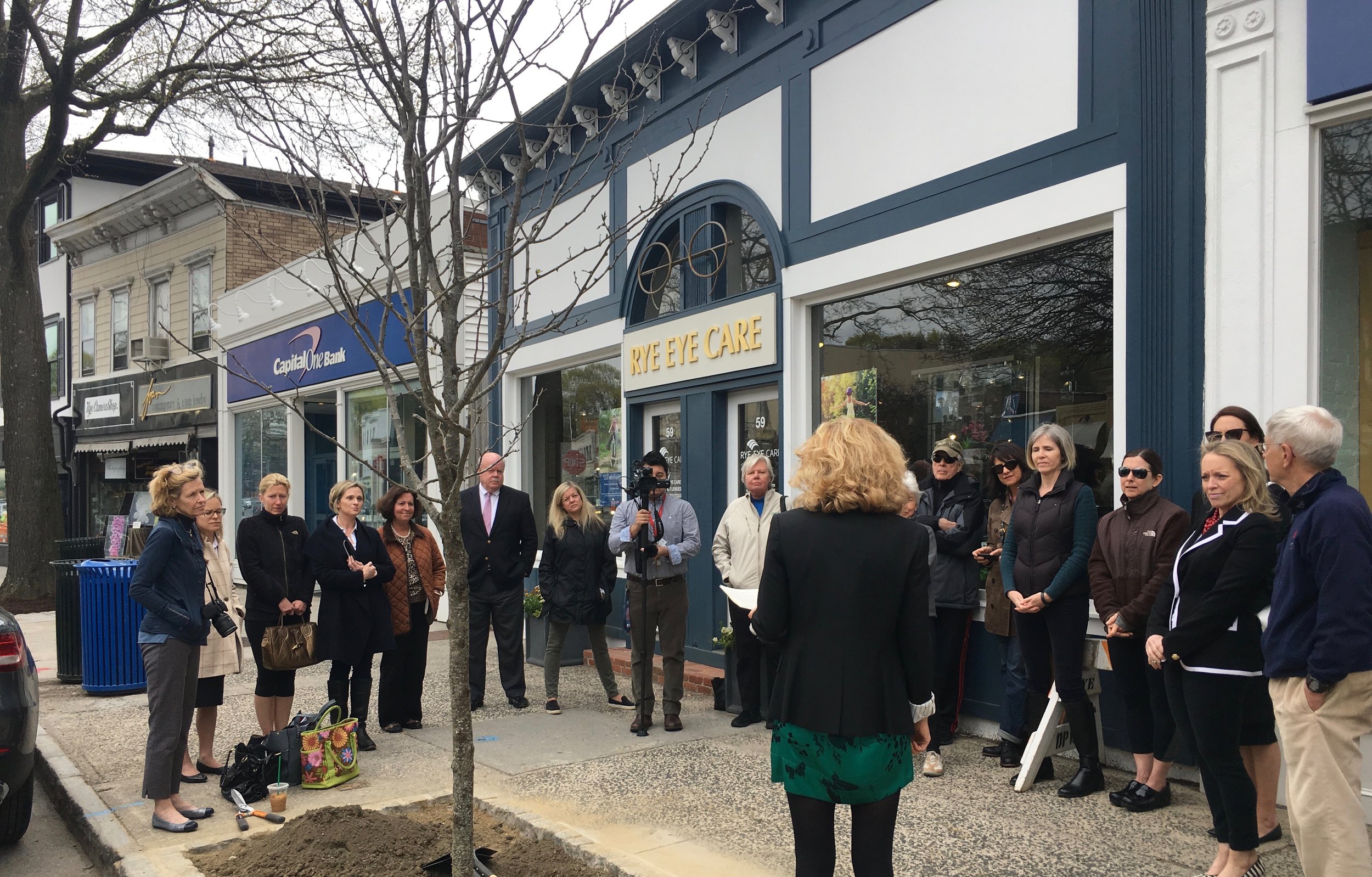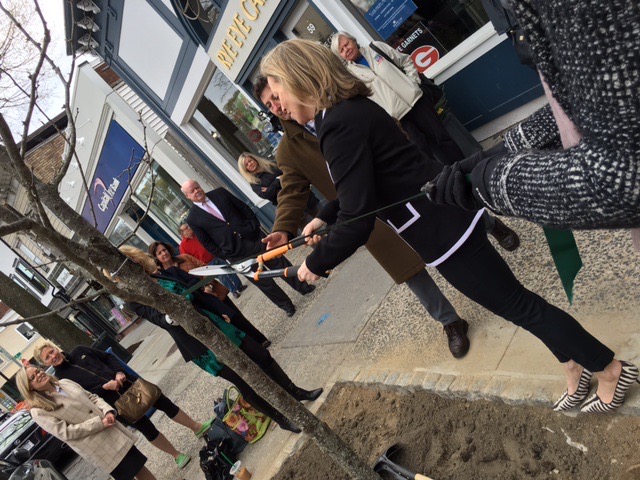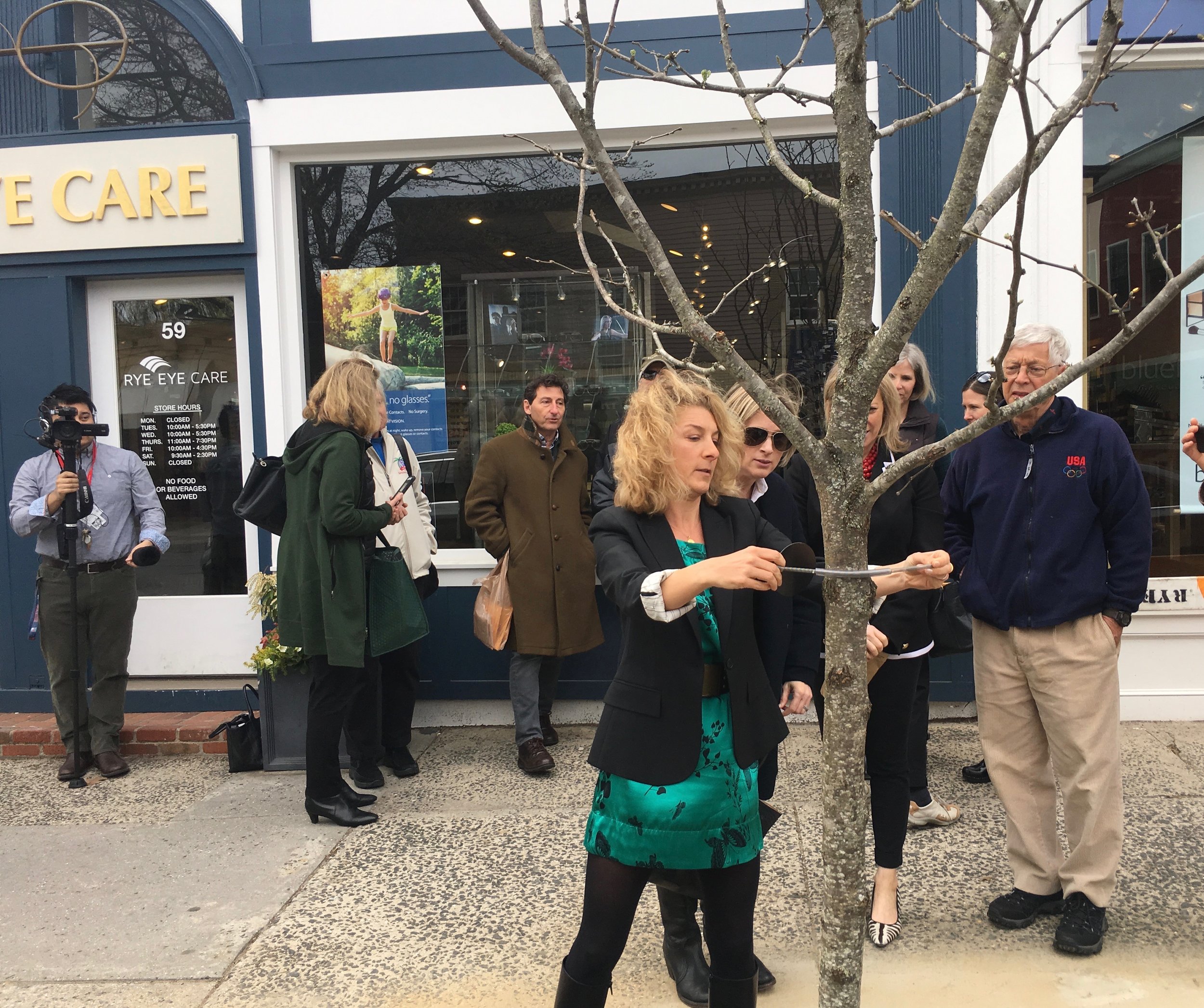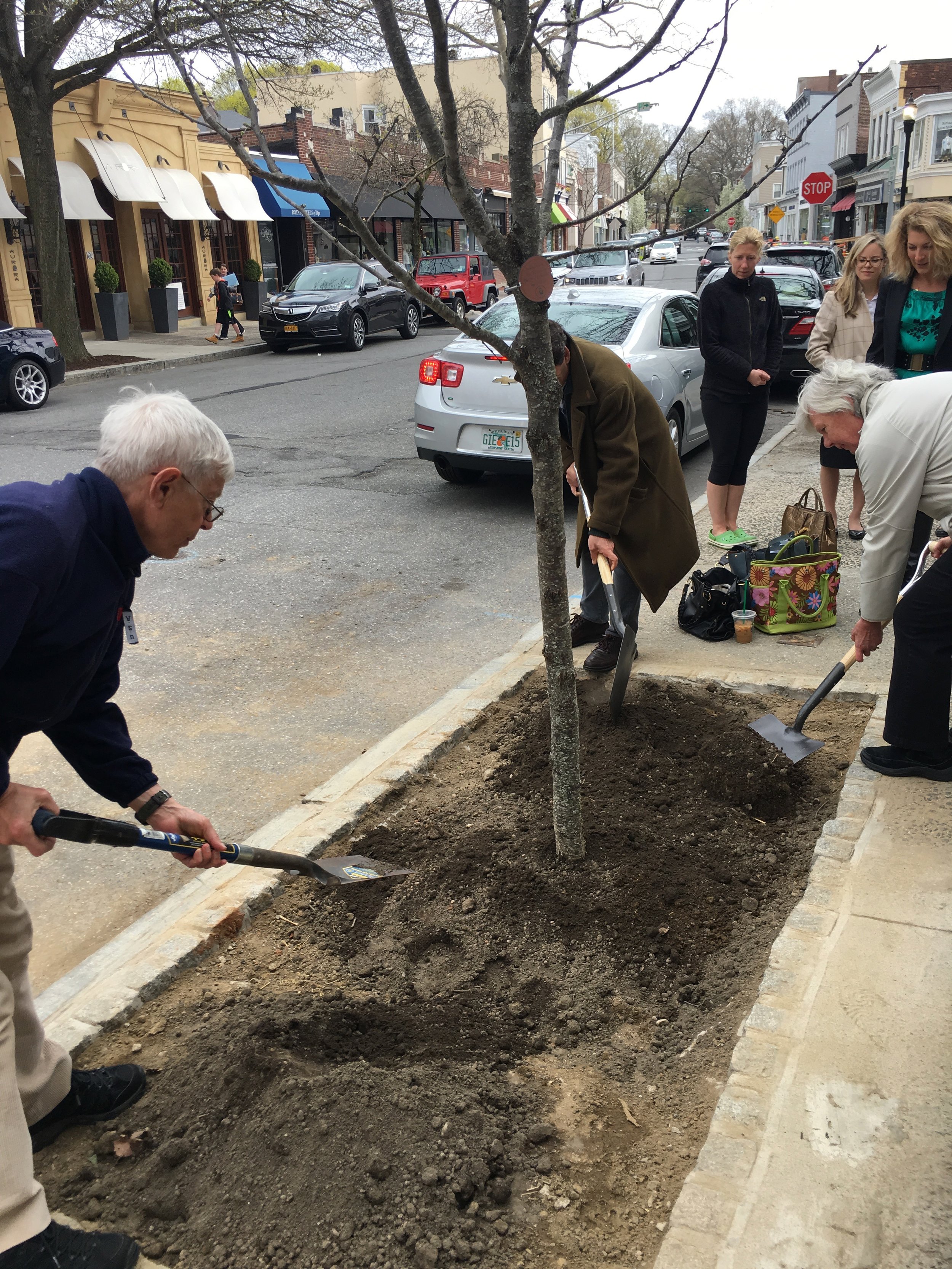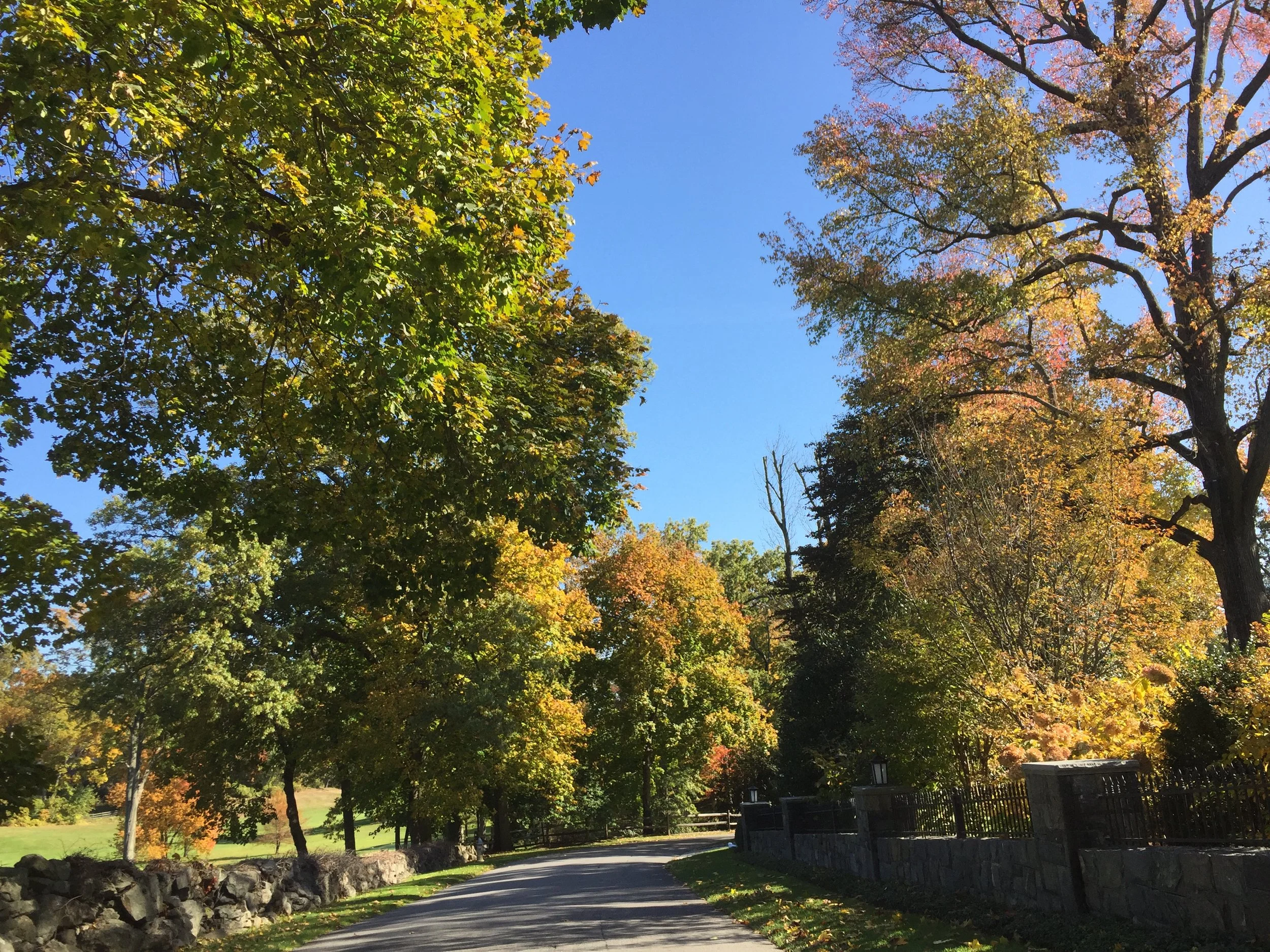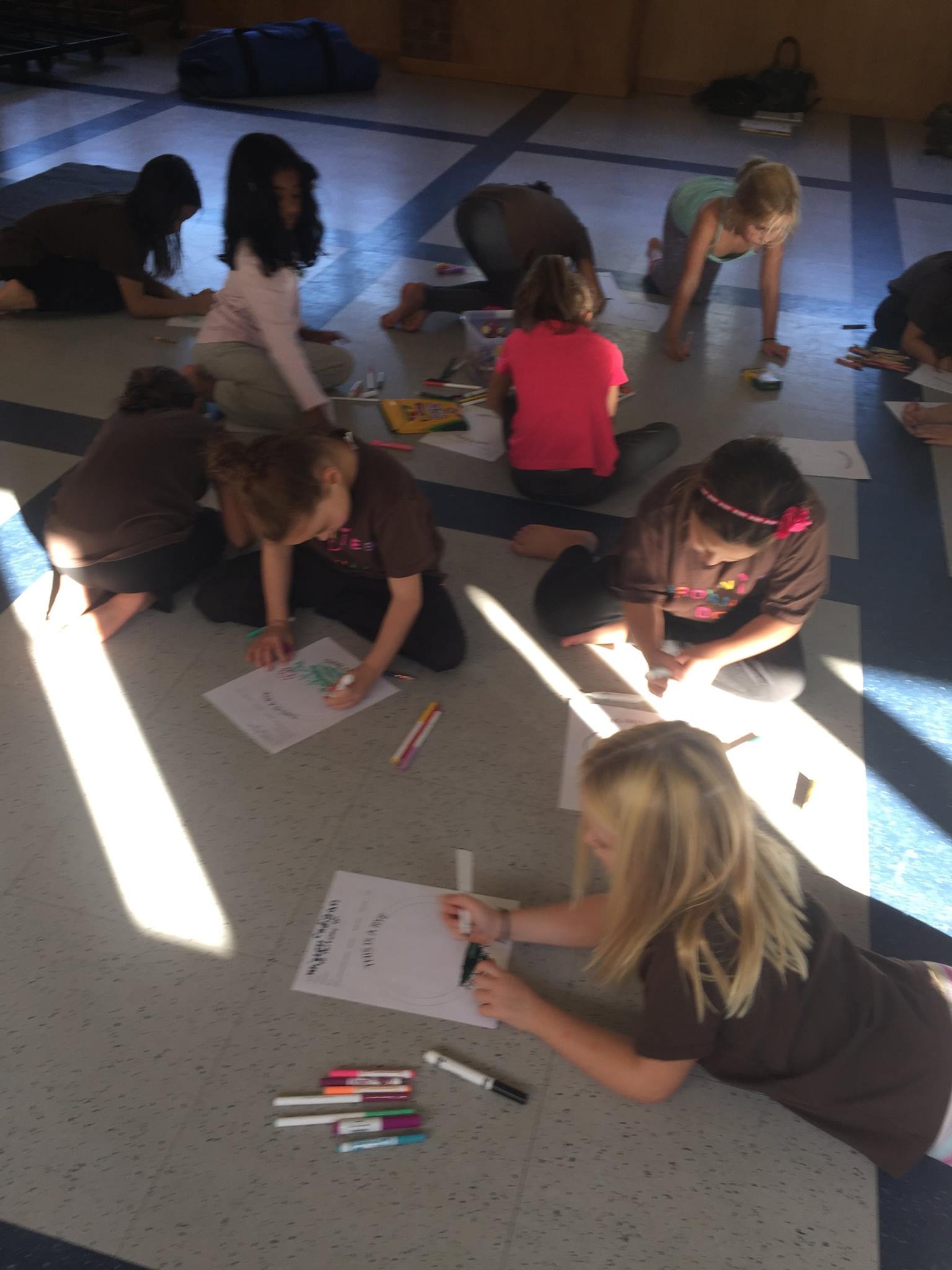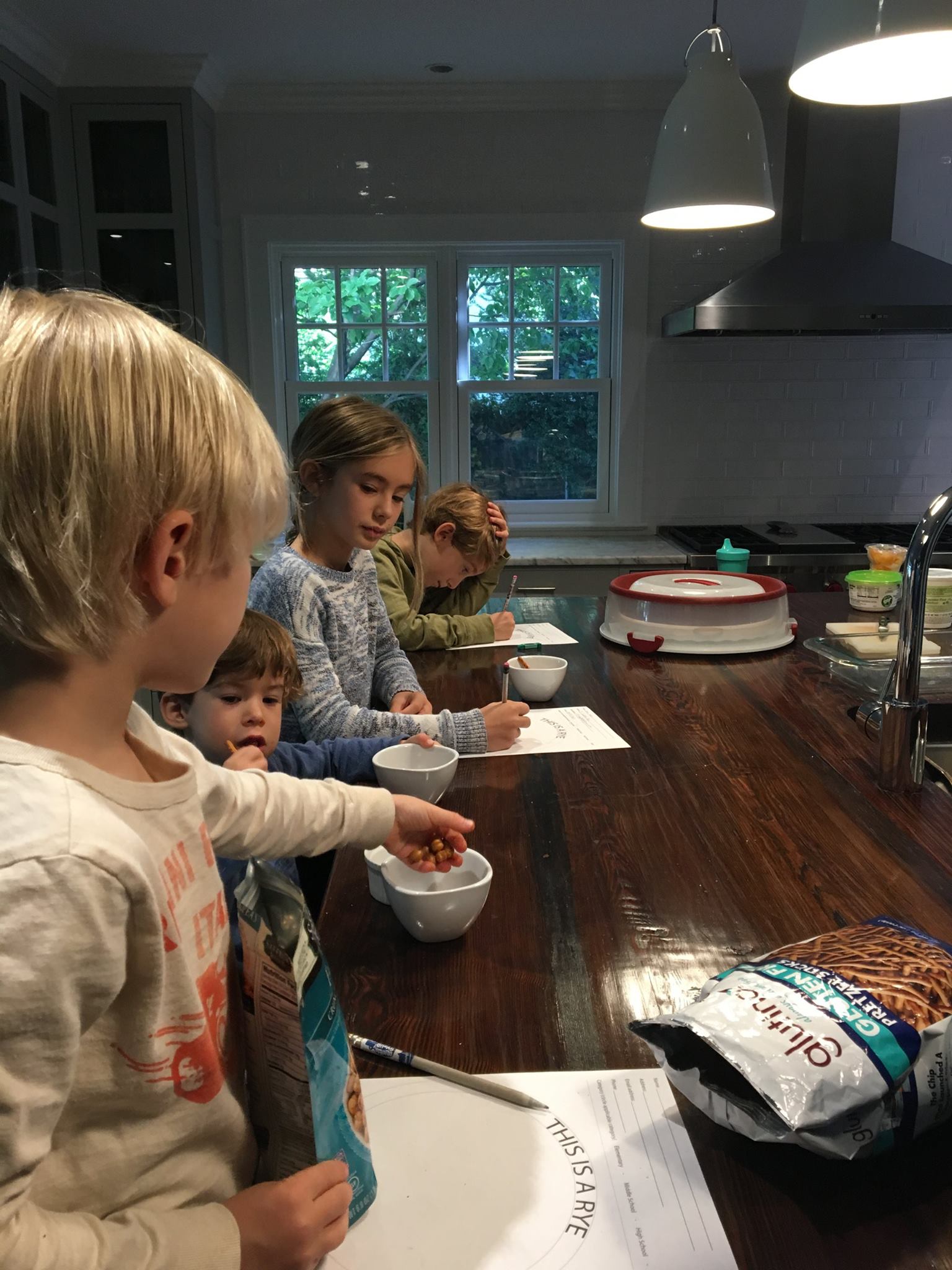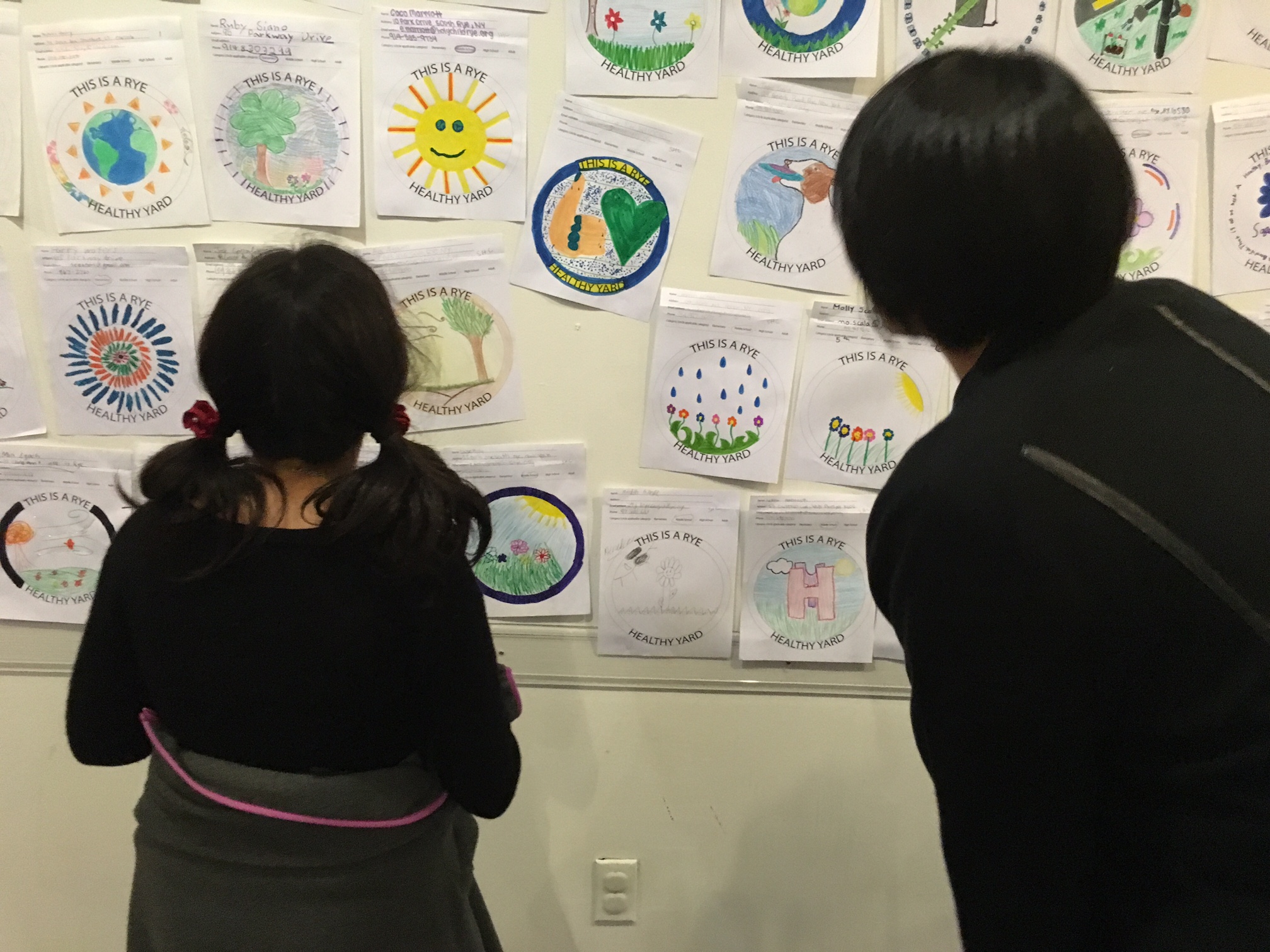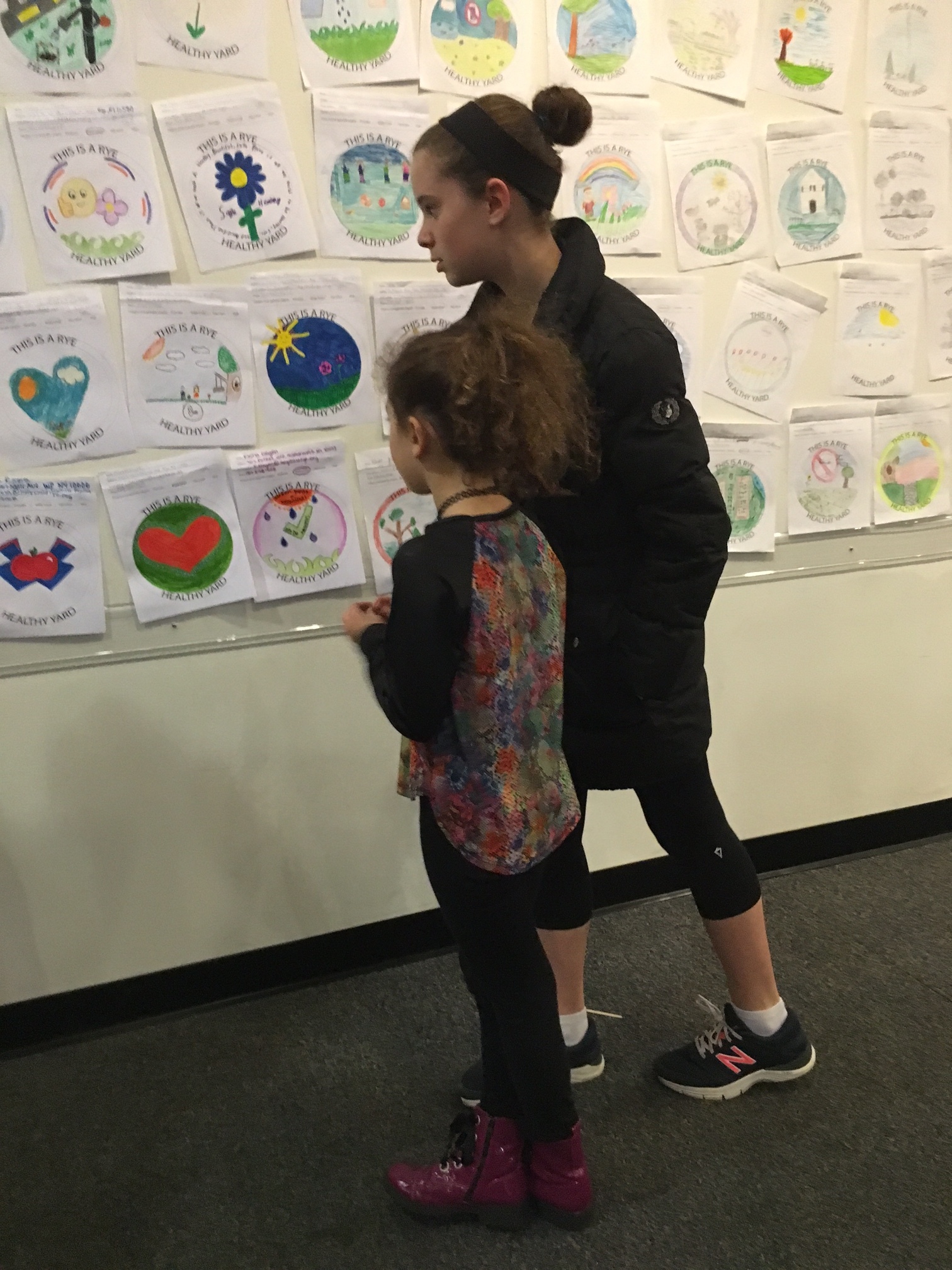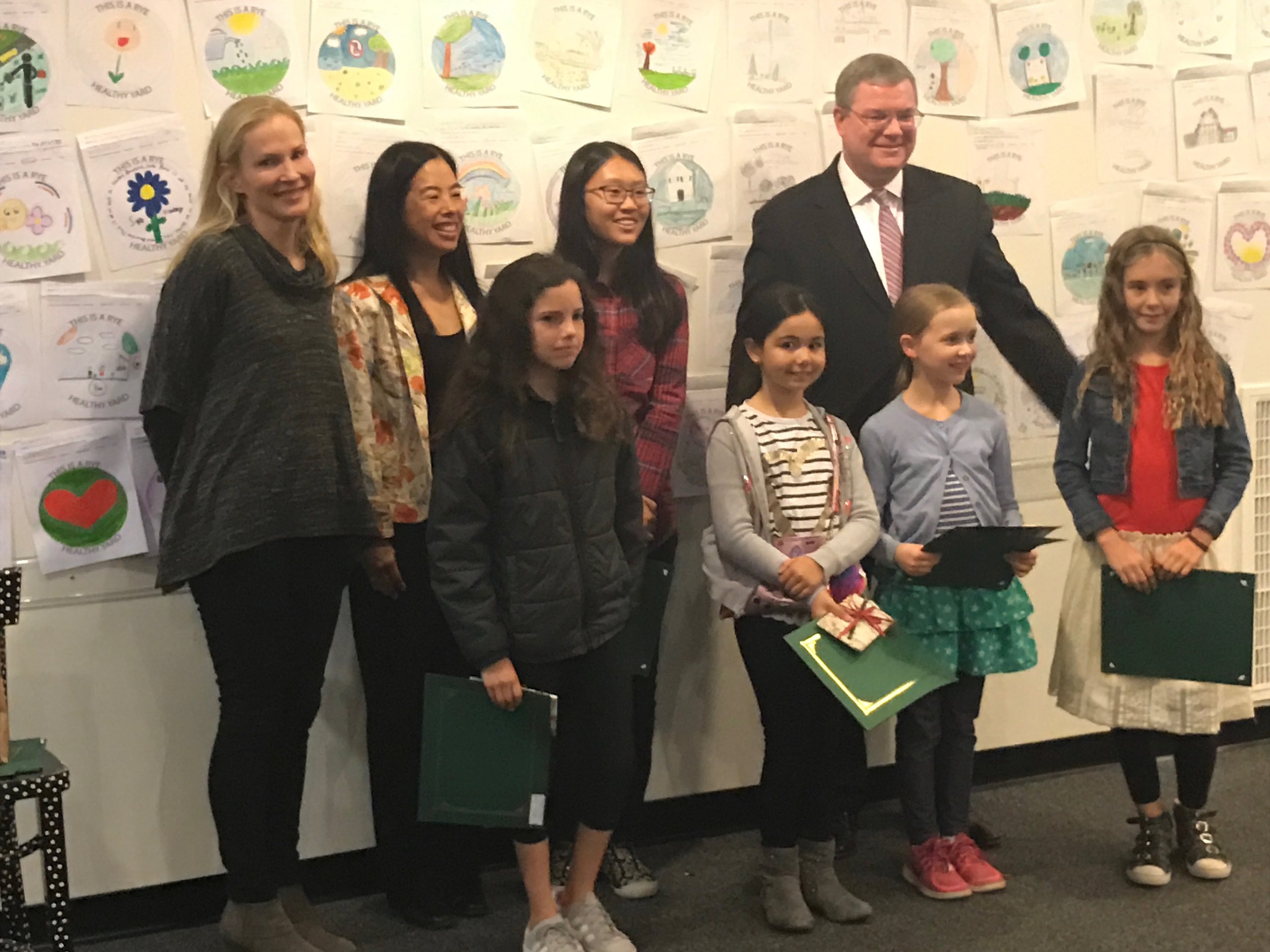The City of Rye has completed its downtown street improvements project on Purchase Street and a number of beautiful street trees, many of them natives, have been added to the landscape.
For Earth Week, Rye Sustainability helped commemorate the planting of the first native tree purchased and planted with funds donated from the Branching Out for Rye Tree Fund - a Thornless Honeylocust. Now five more trees have been added to Purchase Street.
Thank you to City of Rye staff for their efforts in planting these trees and for recognizing the importance of introducing native trees into our community!
For further information about the benefits of trees, please visit our Tree Fund page and consider making a donation to the Tree Fund. Any amount is welcome!
For further information about the Purchase Street trees, please see below.
Thornless Honeylocust
Information about the thornless honeylocust from the Arbor Day Foundation:
A thornless honeylocust in front of TD Bank.
"The thornless honeylocust has captured the hearts of arborists, community foresters and homeowners throughout America. And no wonder. This tree is easy to plant, grows fast, has reasonably strong branches, is aesthetically pleasing and is tough enough to withstand just about any urban setting."
"In nature it grows in both a thorned and thornless form, with thorns growing up to 12" long. Many regions in the South once referred to honeylocusts as Confederate pin trees because those thorns were used to pin uniforms together during the Civil War."
A thornless honeylocust near the intersection of Locust Avenue
Lindens
Two lindens flank Rye Country Store
Information about lindens from the University of Kentucky Department of Horticulture:
"This American native was used for centuries for its fibrous inner bark and fragrant flowers. It bears unique flowers and large, heart-shaped leaves. The tree is stately as a single specimen or when it is allowed to form a clump."
"This tree will develop to its full potential if given full sun and rich, moist, well-drained soil. American linden will tolerate clay, a wide pH range and partial shade. It is noted for its adaptability. "
Red Maple
A red maple tree near the intersection of Purchase Street and Locust Avenue
Information about the red maple from the National Wildlife Foundation:
"Red maple is named for its red flowers, red fruit, red twigs, and of course, the brilliant red fall foliage! Autumn sightseers of the eastern deciduous forest praise the red maple for its striking scarlet leaves. Few people know that red maple foliage can turn yellow or orange in the fall too!"
"Red maples are perhaps the most abundant tree in the eastern deciduous forest. This status can be attributed to the tree’s generalist tendencies. A generalist species is one that can tolerate a wide range of habitat conditions and uses many different types of resources."
"Red maples do well in sunny or shady spots, dry or wet soil, high or low elevation, etc. It’s unlikely that any other tree in North America can match the red maple’s wide range of growing conditions! Adaptable roots help the red maple to cope with differing soil types. If the tree is placed in wet soil, it grows a short taproot and extensive lateral roots to soak up water at the surface. When red maples grow in dry sites, a long taproot and short lateral roots develop. Despite their remarkable roots, red maples grow better in some conditions than others. Deep, moist, acidic soil results in the healthiest red maples."
A red maple tree midway down Purchase near Jos A. Bank store
